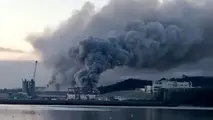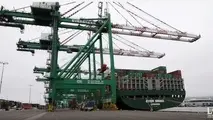Reducing methane emissions from oil and gas: A ten-step roadmap for policy makers
Reducing methane emissions from oil and gas operations is among the most cost-effective and impactful actions that governments can take to achieve global climate goals, said the International Energy Agency (IEA) in a new report.

Reducing methane emissions from oil and gas operations is among the most cost-effective and impactful actions that governments can take to achieve global climate goals, said the International Energy Agency (IEA) in a new report.
Although methane has a much shorter atmospheric lifetime than CO2 – around 12 years, compared with centuries for CO2 – it absorbs much more energy while in the atmosphere, so it is a potent greenhouse gas with important implications for climate change.
IEA estimates that the oil and gas sector emitted around 70 Mt of methane (approximately 2.1 Gt CO2-eq) in 2020 – just over 5% of global energy-related greenhouse gas emissions. Early satellite data suggest that the incidence of large-scale leaks fell in 2020, although some of this likely stems from the major drops in production as a result of the Covid-19 pandemic.
"Under the IEA Sustainable Development Scenario (SDS), emissions from this sector will need to fall to around 20 Mt per year by 2030 – a drop of more than 70% from levels in 2020."
In its new report 'Driving Down Methane Leaks from the Oil and Gas Industry', IEA suggests that one of the aims of any new policy effort should be to improve measurement and reporting of emissions data, which can in turn lead to more efficient regulatory interventions. However, the current state of information on emissions should not stand in the way of early action on methane abatement.
Experience shows that countries can take an important “first step” today based on existing tools, which may include prescriptive requirements on known “problem sources” combined with monitoring programmes that seek to detect and address the largest emissions sources (“super emitters”).
"There are a number of voluntary, industry-led efforts to reduce methane emissions, and a number of individual companies have announced methane reduction targets in the past year. Nevertheless, an immediate and significant change in ambition is needed to achieve the sorts of reductions that would be consistent with international climate objectives. While industry efforts can and should continue, government policy and regulation will be critical to removing or mitigating obstacles that prevent companies from getting started and going further,"
...IEA report reads.
In terms of process, implementing a new policy or regulation should involve three distinct phases:
- understanding the local setting and circumstances,
- regulatory design and development, and
- implementation.

A ten-step roadmap for policy makers
Step 1: Understand the legal and political context
Step 2: Characterise the nature of your industry
Step 3: Develop an emissions profile
Step 4: Build regulatory capacity
Step 5: Engage stakeholders
Step 6: Define regulatory objectives
Step 7: Select the appropriate policy design
Step 8: Draft the policy
Step 9: Enable and enforce compliance
Step 10: Periodically review and refine your policy.



